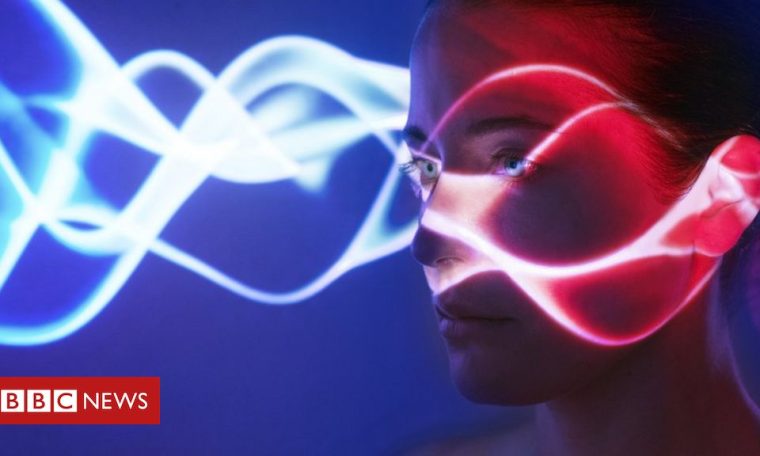
- Manuel D. Barriga-Carrasco
- Conversation*

Credit, Getty Images
In classical physics, there are two well-differentiated worlds: waves (mechanical or electromagnetic) and particles (corpuscles), both very well defined.
At first it was believed that there was no connection between these two worlds, but at the end of the 19th century, when smaller worlds (molecules, atoms and their components) became known, it was discovered that the smallest particles were like waves. can behave.
If particles behave like waves, we need to know which wave is associated with those particles: the “particle wave”.
At the same time, at that time, the opposite became apparent: wave behavior similar to that of particles. Two examples are the photoelectric effect and the Compton effect.
Louis de Broglie based himself on an already existing definition of photons: that they were the particles that make up light (in classical physics, a wave) that behaved like particles.
Thus, it was known that photons had zero mass, that their speed was that of light and that they had an impulse associated with the wavelength of that light (wavelength is a characteristic of waves that tells us how far away the wave is. repeats itself again).
Credit, PM Images
De Broglie thought that if light could behave like a particle and had an impulse associated with its wavelength, then electrons could behave like waves and had a wavelength associated with their impulse.
He defined the de Broglie wavelength, the “particle wave”, as the Planck constant (a very small number characteristic of the atomic world) divided by the particle’s impulse.
This idea was not based on any calculation or evidence. It was a hypothesis that needed to be proven.
double slit experiment for light
The two-slit experiment is an experiment by the English physicist Thomas Young in the early 19th century, intended to support the theory that light is a wave and to refute the theory that light was composed of particles.
Young shone a beam of light through two membranes and observed an interference pattern on a screen, a series of alternating bright and dark stripes.
This result would be unclear if the light was composed of particles, as only two light bands should be observed in front of the slits, but it is readily interpretable that light is a wave and that it suffers from interference.
Later, this experiment was considered in quantum physics to demonstrate the wave behavior of very small particles at the scale of atoms.
The experiment can be performed with electrons, atoms, or neutrons, with interference patterns similar to those obtained when done with light. Therefore, it shows this wave-like behavior of the particles.
two electron slit experiment
Let us see what happens in the double-slit experiment, if instead of a beam of light, we have a beam of electrons.
These electrons can be launched at any speed we like, accelerating them through a difference in electric potential.
Since we can choose the speed of these electrons and the de Broglie length depends on the momentum, we are actually choosing the wavelength of these electrons.
However, creating a double slit for the electron case is not easy. This experiment could only take place several years after the idea was proposed.
Credit, Getty Images
The two-slit experiment was done by Thomas Young in the early 19th century.
In 1961, Claus Jonsson accelerated an electron beam to 50 thousand volts and passed this beam through two slits with very little distance and width.
First, electron beams were launched through a single slit, and they were counted remotely with detectors. The slit-facing detectors counted many more electrons.
Then, another slit was built, with which it was observed to fluctuate the electron count according to the position of the detectors.
That is, at the height of the first slit there were detectors that received fewer electrons when there were two slits than when there was one.
At first he thought it was due to the charge on the electrons. With a negative charge, these electrons can repel each other as they travel together in the beam.
To prove this, he opened two slits one by one and threw electrons and got the same result. Therefore, they came to the conclusion that these highs and lows indicated that the electrons were interfered with and therefore possessed wave properties.
The two-slit interference pattern drawn by Jonson had similarities to the two-slit pattern obtained from light sources, reinforcing the evidence in favor of the wave nature of the particles.
At the same time, other experiments were conducted with particles that came to the same conclusion: they had wave properties. It was not interpretable from the point of view of classical physics, so it would be part of a larger branch of modern physics, quantum physics.
measurable use
Let’s estimate the de Broglie wave associated with the electron. If the electron moves at a speed close to the speed of light, for example 0.6 times the speed of light, then its associated wavelength is about 3 picometers, a very short but measurable wavelength within the beam spectrum. X or Gamma.
Now, let’s calculate the de Broglie wavelength of a car that weighs 1000 kg and moves at 100 meters per second. The wavelength associated with this car is 6.6 x 10⁻³⁹ meters, which is so small that it is impossible to measure.
Therefore, there is no experiment that can show the wave nature of macroscopic objects. Only when you enter inside an atom to experiment with atom and atomic particles, is it possible to observe the de Broglie wavelength, the wavelength of the particles.
* Manuel D. Barriga-Carrasco is a professor at the Superior Technical School of Industrial Engineers at the University of Castilla-La Mancha in Spain.
This article was originally published on academic news site The Conversation and republished here under a Creative Commons license. read original version here (in Spanish).
Watched our new videos on youtube, Subscribe to our channel!



